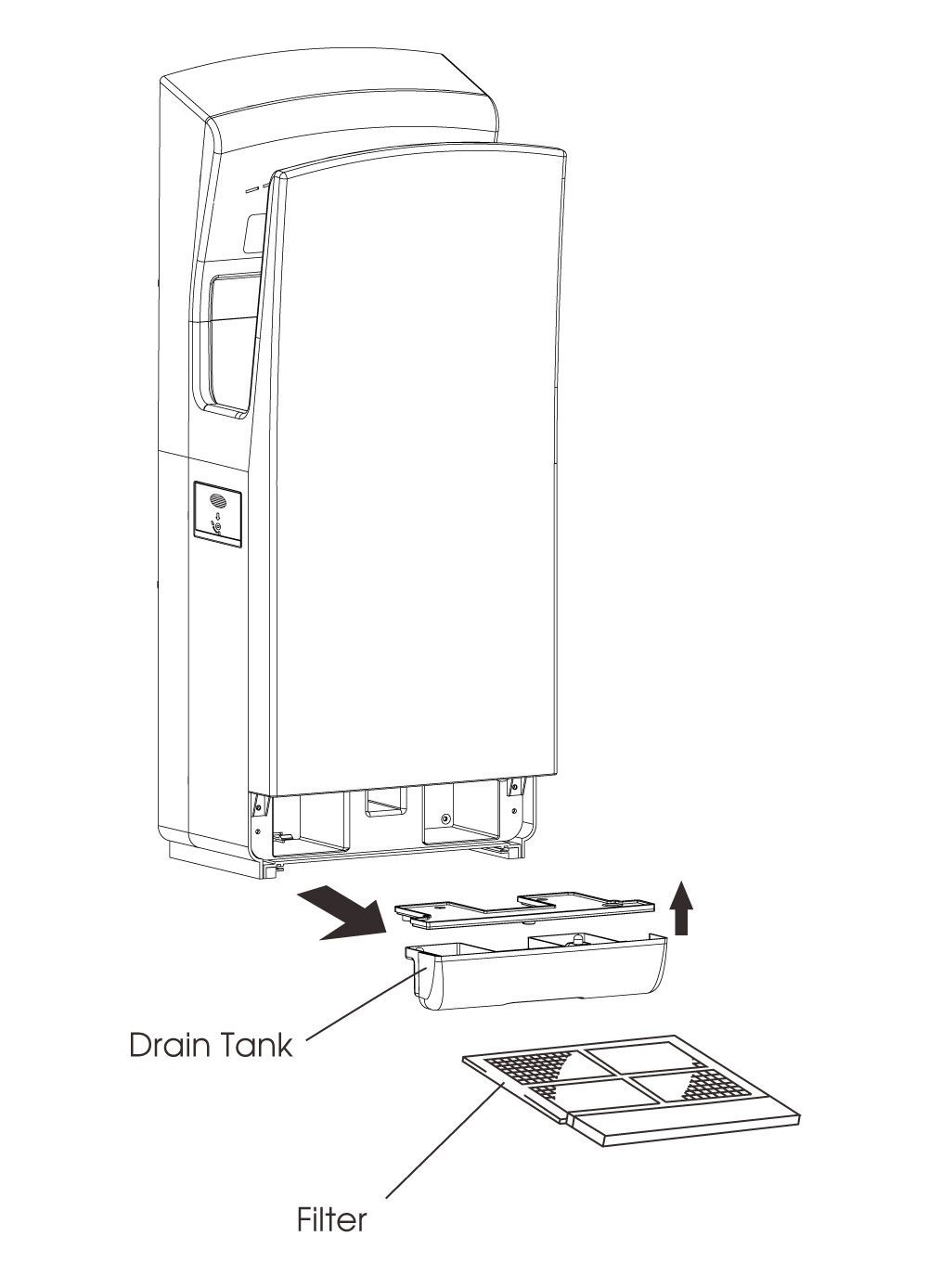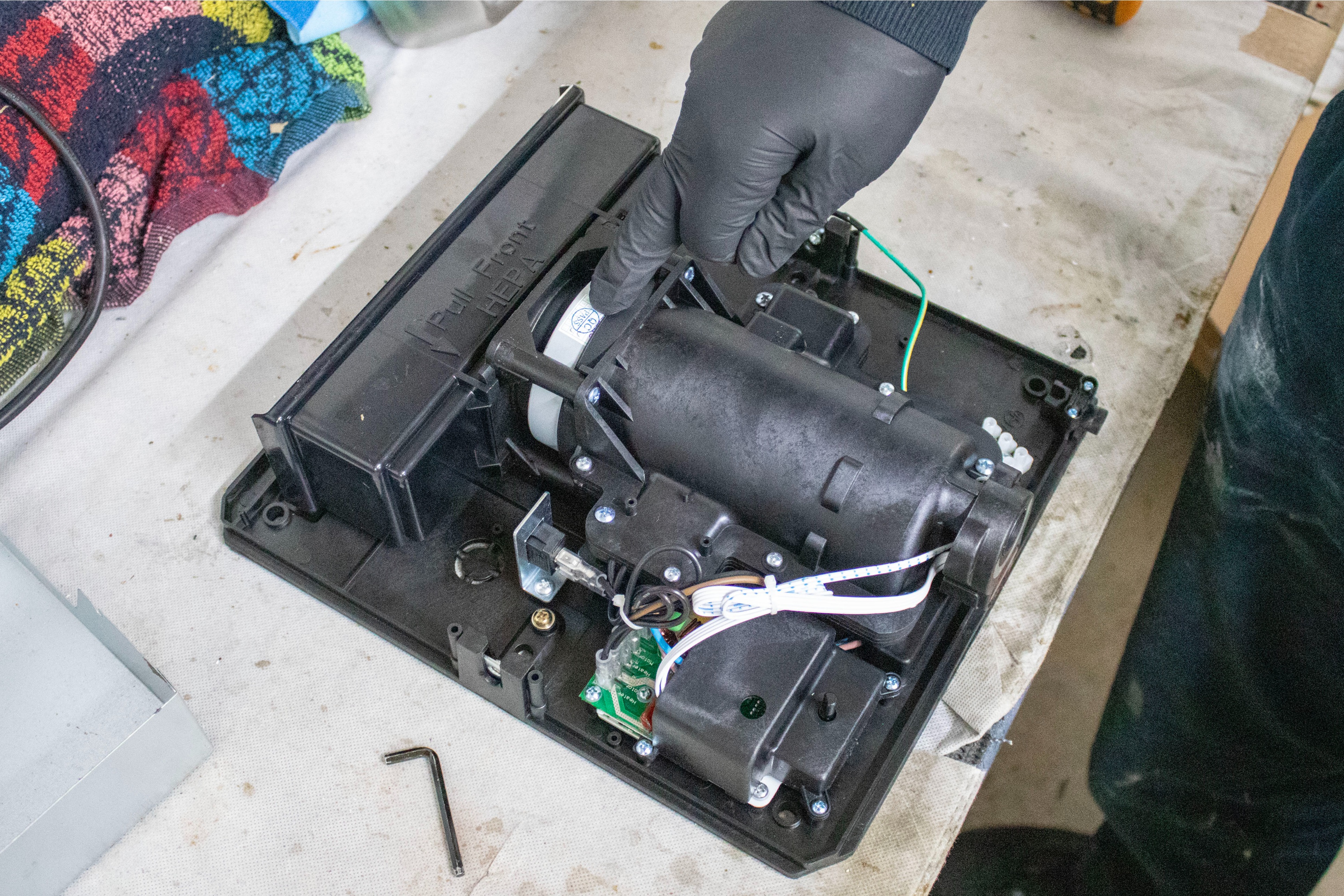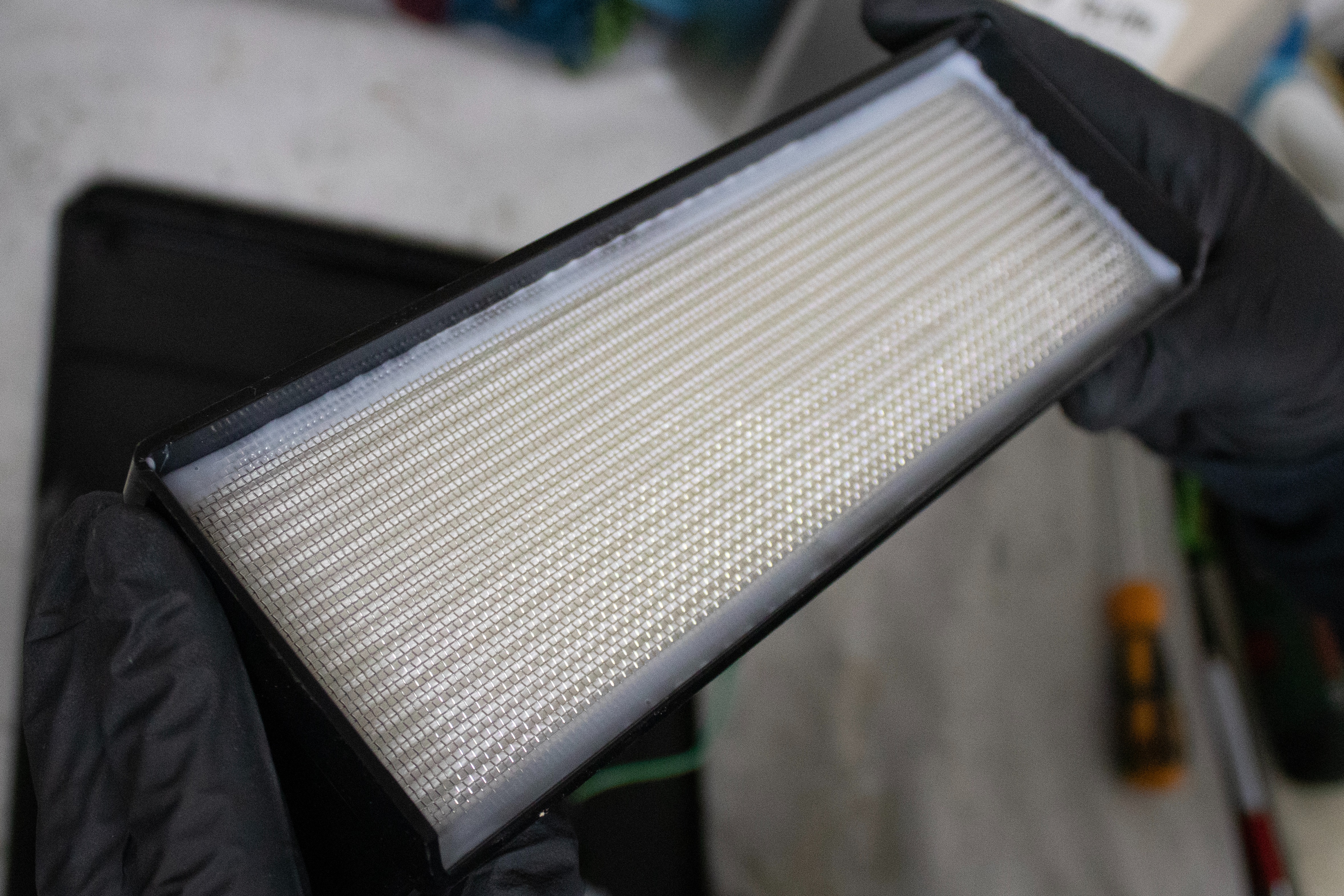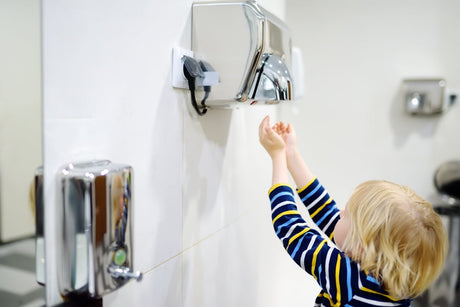Keep Your Dryer Running Smoothly
Looking after your hand dryer properly is one of the easiest ways to make sure it performs well and lasts for years.
We’ve put together this hand dryer maintenance guide to walk you through the basics. These quick checks should be done at least once a month, unless your manufacturer recommends otherwise.
Always check the manufacturer's manual for exact instructions and reach out to our team if you need advice.
Important to Know
- Faults caused by poor maintenance or operation in unsuitable environments won’t be covered under warranty.
- If your dryer has a brushed motor, it might give off a light ozone smell the first few times it runs, this is normal and fades after 1-2 weeks of regular use.
Hands In (Blade) Hand Dryer Care
 Hands in dryers are popular in busy washrooms because of their fast drying times and sleek design. Depending on how much traffic your hand dryer gets, the water tray maybe need more frequent emptying.
Hands in dryers are popular in busy washrooms because of their fast drying times and sleek design. Depending on how much traffic your hand dryer gets, the water tray maybe need more frequent emptying.
- Remove / turn off the mains supply to the hand-dryer.
- Wipe down the outer casing with a soft, damp cloth.
- Check the hand sensor area. Use a soft cloth and neutral detergent on the IR LED visor to ensure it is clean and free of dust.

Check manufacturer's manual for drain tank and filter locations.
- Empty and clean the water tank. Wipe with a soft cloth and neutral detergent before reattaching.
- Remove and clean the air filter every 1–2 weeks, depending on how often the dryer is used.
- Once everything’s dry, return power and test the dryer to make sure it’s running smoothly.
Hands Under Hand Dryer Care

Hands under dryers are compact, reliable, and easy to maintain. Performing these checks regularly helps avoid costly repairs and ensures your dryer operates at peak efficiency.
- Remove / turn off the mains supply to the hand-dryer.
- Remove the dryer cover.
- Use a fine brush to remove any dust from the internal parts.
- Clean the air inlet grill with a medium brush to prevent lint build-up.
- Inspect the motor brushes and replace them when they’re worn down to less than 5 mm (0.2").

Check manufacturer's manual to identify and safely locate internal components.
- Gently clear away any dust from the circuit board using a fine brush
- Make sure the sensor area and IR LED visor is free from dust and dirt. Clean with a soft damp cloth and neutral detergent.
- When all parts are completely dry, restore power and run the dryer briefly to blow out any leftover dust.
HEPA Filter Care (If Applicable):

- A dirty or clogged HEPA filter restricts airflow and can put unnecessary strain on the motor.
- The service life of a HEPA filter depends on the environment in which the dryer is installed and frequency of use.
- It should be inspected at least four times per year in washrooms with light to moderate traffic.
- In areas with excessive dust and debris or in washrooms with high traffic, inspection of the HEPA filter is recommended on a monthly basis.
- When visual inspection of the HEPA filter shows excessive build-up of lint, dust and debris, the filter should be replaced. For average use dryers, this is usually every 6 months.
General cleaning tips:
- Always use mild, neutral cleaning products.
- Avoid rough cloths or scouring pads that could scratch the surface.
- Wipe off detergents with a clean, damp cloth to remove residue.
- Clean away soap, sanitiser, and other product build-up quickly to prevent damage.
- To avoid limescale marks, dry the surface with a soft cloth after cleaning.
- Stainless steel dryers are durable but still benefit from gentle, regular cleaning to preserve their shine and prevent rust.
If you are not sure how to clean your dryer correctly, always read the manufacturer’s manual or contact us for more information.





